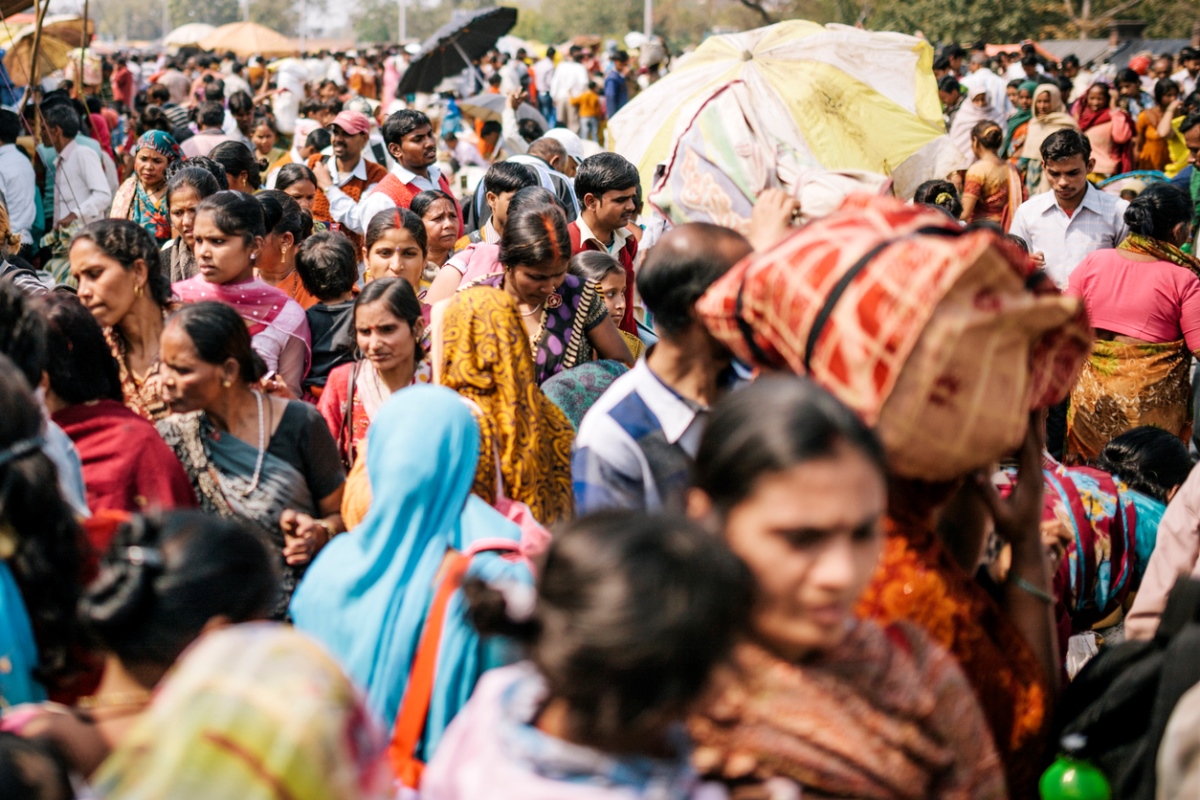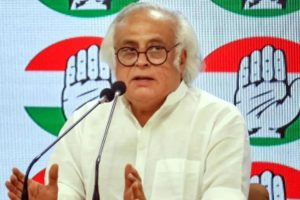Election time in India is always a time for doling out freebies, but the elections of 2019 are beating all expectations as the two major political parties are engaged in fierce and competitive populism. Both the Bharatiya Janata Party and the Congress are united as one party borrows populist ideas from the other while trying to outdo each other.
Promising sops is much easier than creating jobs which demands ideas, vision and deft management. Running out of ideas, all parties find it easier to join the race to the bottom. So, welcome to the approaching Dole Raj in India, regardless of who becomes the Raja.
The Congress has been a pioneer in doling out populist handouts; now all other parties are trying their best to emulate its example while promising distribution of national resources in the name of welfare without bothering about the means. The latest in the Congress’s ingenuity is its promise of a guaranteed minimum income (Nyuntam Aay Yojana or NYAY) of Rs 6000 every month to 20 per cent of the poorest households. The expenditure, estimated to be around Rs 5 crore, has been projected as the final surgical strike on poverty.
Earlier, in the interim budget presented in February, the Modi Government had announced the Pradhan Mantri Kisan Samman Yojana (PMKSY) to provide each farmer with less than 2 hectares of agricultural land, a direct benefit transfer of Rs 6000 a year, drawing inspiration from Telangana’s Rythu Bandhu income support scheme to the farmers.
At 12 times more ambitious than PMKSY, NYAY will cost the exchequer a whopping Rs 3.6 lakh crore. Bad economics is seldom good politics, and it remains to be seen if the massive sop that will dwarf MNREGA will succeed in hoisting the Congress to power. Of course, as Rahul Gandhi has rightly said, poverty has no place in the 21st Century India and NYAY is his method to eliminate poverty in one fell swoop, for which farm loan waivers have proved to be inadequate.
The relief packages and waivers for farmers announced by states ruled by the BJP, the Congress and other parties have so far exceeded Rs 2.3 lakh crore. SP has promised 100 per cent loan waivers, and besides waivers, there are many bizarre and stellar promises with substantial fiscal implications being made by all parties.
But NYAY beats them all. A sop is actually a redistribution of income from the rich to the poor and is sustainable only by high growth in the absence of which, it will only redistribute poverty. Only sustained capital investments can fuel growth and address poverty in the long term, and when capital investments have to compete with sops for funding, poverty is institutionalised.
Besides the cost of financing, any redistribution also has to address the question of efficiency of delivery. While financing is about fiscal numbers, delivery relates to the capacity and efficiency of the administrative apparatus. When winning elections is permissible at any cost, economics and fiscal numbers may be disregarded, but delivery assumes importance after winning the elections, and then the cost can be disregarded no more as parties have to face elections again.
The idea of NYAY has been borrowed from the 2016-17 Economic Survey, which examined the proposal of a Universal Basic Income (UBI) scheme to cover the bottom 75 per cent of the population while cutting down on some subsidies. It suggested transfer of an income of Rs 7,620 per person per annum, based on Tendulkar’s poverty line of 2011- 12, inflation-indexed to 2016-17, which would cost 4.9 per cent of India’s GDP, compared to 5.2 per cent of GDP spent on all the 950 central and centrally sponsored schemes, to address the problems of poverty as well as delivery.
Definition of poverty and size of the poor in India are contentious issues and estimates vary widely. In 2011-12, 21.9 per cent of the population or 269.3 million Indians were estimated to be poor, following Suresh Tendulkar’s method.
The World Bank estimated in 2015 that 12.4 per cent or 172 million people, about 36 million households, were living in extreme poverty, below its global poverty line of $1.90 per day. By whatever standard poor households are identified, the identification of the eligible families would be a nightmare, as the poor are employed overwhelmingly in the informal sector on which we hardly have any reliable data, let alone data on income.
The identification exercise would necessarily have to involve public officials from blocks, districts and panchayats, including elected members of legislatures, thereby opening up huge channels for corruption. The 2016-17 Economic Survey had warned that “given the amount of cash that will flow through the system under the UBI and the fungible nature of money, one could imagine a perverse equilibrium where UBI results in greater capture by corrupt actors”.
Assuming 5 crore beneficiary families requiring Rs 3.6 lakh crore or 1.8 per cent of our GDP annually under NYAY, transfer on this massive scale has never been implemented anywhere in the world so far, though a few countries or their sub-national governments, like Brazil have conducted pilot studies, while some others like Ontario and British Columbia (Canada), France, Scotland, Barcelona (Spain) are planning to conduct pilot surveys. Finland had started a scheme in 2017 to pay 2000 jobless people assistance of 560 Euros a month, but the experiment was stopped in 2018.
Switzerland’s plan to give UBI was defeated in 2016. In Kenya, an experiment is going on to provide some villagers $0.50-$1 per day. India has an income transfer scheme, though on an insignificant scale, in the form of National Social Assistance Programme (NSAP) since 1995, under which the government provides pensions to 26 million elderly, widows and disabled citizens at rates ranging from Rs 200 to Rs 500, which is actually a pittance that costs Rs 9000 crore annually.
The ruling Sikkim Democratic Front plans to roll out UBI from 2022. The idea behind NYAY may be workable only if we can rationalize our welfare schemes and subsidies, but since every such scheme or each subsidy targets a specific segment of the population, it will virtually be impossible to roll these back and substitute them by an income transfer scheme like NYAY without compromising the vote banks, which politicians would find repugnant.
Fiscal numbers therefore assume vital importance in determining the feasibility of such schemes. The 2019-20 interim budget estimates our total revenues at around Rs 20 lakh crore, of which Rs 3.34 lakh crore will be spent on subsidies alone : on food (Rs 1.8 lakh crore), fertilizer (Rs 75000 crore), petroleum (Rs 37000 crore), interest subventions and subsidies (Rs 25000 crore) and other subsidies (Rs 12000 crore).
Thirty Centrally Sponsored Schemes would consume Rs 3.28 lakh crore, of which MNREGA alone would claim the bulk of Rs 60000 crore. It is doubtful if any political party would have the courage to roll back any of these subsidies or stop MNREGA or similar schemes all of which target poverty alleviation.
That being so, an additional 15 per cent of the revenue will have to be spent on NYAY, hiking the revenue deficit of Rs 4.7 lakh crore by 63 per cent and the fiscal deficit of Rs 7 lakh crore by 42 per cent, to 4.8 per cent of GDP in place of the current 3.4 per cent.
We should be ready to bid goodbye to fiscal consolidation and FRBM targets, and usher in a regime of high fiscal deficit and what inevitably will follow ~ high inflation and low growth, compromising macroeconomic stability.
Since sops don’t improve employability by imparting skills and education, more people will be mired in poverty, requiring more sops every year, till the vicious spiral leads the country into another abyss, as in 1991. Besides, our poor will have to reconcile themselves to live as permanent receivers of Government doles, rather than as productive citizens contributing to the nation’s growth and living a life of dignity, as promised in the Preamble to our Constitution.
(The writer is a commentator. Opinions are personal.)












